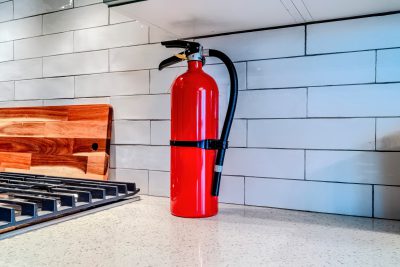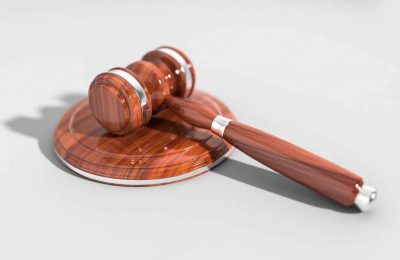Getting your tenancy deposit back after moving out of a rented property in Scotland can be straightforward if you know what steps to follow. Whether you’re renting your first flat or moving on to somewhere new, ensuring that you get your deposit back is very important for your financial stability. Follow some practical advice to make sure you receive your deposit without any hitches.
Understand Your Tenancy Agreement
The first step in making sure you get your tenancy deposit back is thoroughly understanding your tenancy agreement. This document outlines your responsibilities as a tenant, including the condition in which you should leave the property. Pay special attention to any clauses that discuss the standards for cleanliness and repairs – these are often areas where disputes can occur. Also, look for any specific requirements about fixtures or alterations you may have made or plan to make. Knowing these details will help you revert the property to its original state if required, which is often a stipulation for getting your deposit back in full.
Document Everything
When you move into a rental property, take the time to document its condition. This means taking date-stamped photos or videos of every room and noting any existing damages or issues in a move-in report. Repeat this process when you move out. Having detailed records can provide clear evidence if there are disputes over the property’s condition at the end of your tenancy. Make sure to focus on areas that are prone to wear and tear, such as carpets and walls, as these are more likely to be scrutinised during the move-out inspection.
Keep Up with Regular Cleaning and Maintenance
Maintaining the property regularly throughout your tenancy is one of the best ways to guarantee you will not face deductions from your deposit for cleaning or repairs. This includes routine cleaning tasks as well as addressing minor repairs or damages immediately. If you take care of these issues promptly, it will be easier to manage the property’s condition over time. Establishing a routine for deep cleaning tasks, such as clearing out vents and scrubbing grout, can also prevent build-up that might be harder and potentially more expensive to deal with when moving out.
Communicate with Your Landlord
Effective communication with your landlord can go a long way toward warranting you get your tenancy deposit back. If issues or damages arise during your tenancy, discussing them with your landlord immediately can help ensure that solutions are agreed upon before they become larger problems. This proactive approach can prevent disagreements at the end of your tenancy. Regular updates about the property’s condition and any concerns you have can also build a good rapport with your landlord, which might make them more lenient and understanding about normal wear and tear.
Know Your Rights and Responsibilities
In Scotland, tenancy deposits must be registered with a government-approved tenancy deposit scheme within 30 working days of the tenancy starting. This protects your money and provides a free dispute resolution service if there is a disagreement about the deposit at the end of the tenancy. Familiarise yourself with the deposit protection scheme’s rules and processes, as this knowledge can empower you during any disputes.
Additionally, understanding the timeframe and method for deposit returns is crucial; typically, deposits must be returned within a certain period after the tenancy ends if no disputes arise. Being aware of these timelines ensures you know when to follow up and what steps to take if the deposit is not returned as expected.
Plan Your Exit
As your tenancy agreement comes to an end, start preparing the property for inspection. This means doing a thorough clean, including areas that are easy to overlook, like behind appliances and inside cupboards. Repair any damages that occurred during your tenancy that you are responsible for.
If possible, do a final walkthrough with your landlord. This allows you both to discuss the property’s condition, agree on any issues, and decide on necessary deductions, if any. It’s also beneficial to ask your landlord about their expectations for the property’s condition during this final meeting. This can help clarify any last-minute tasks you might need to address, ensuring that you meet all requirements to get your deposit back fully.
Prepare for Moving Day
One of the key aspects of making certain you get your tenancy deposit back is leaving the property in good condition. To facilitate a smooth move and minimise damage, get organised and get all the packing supplies you’ll need in advance. Quality boxes, packing tape, bubble wrap, and markers can help you organise and protect your belongings during the move. Proper packing reduces the risk of damage both to your items and the rental property, which can be grounds for deposit deductions.
Plus, cleaning the empty rooms becomes much easier when everything is neatly boxed up, allowing you to do a final sweep before the final inspection. In addition, consider the logistics of moving day, such as reserving a parking spot for the moving truck or hiring professional movers to handle heavy and delicate items. These steps can further prevent damage and stress during the move.
Dispute Resolution
If there is a disagreement over the condition of the property or the deductions from your deposit, remember that you have the right to challenge any decisions through the deposit protection scheme. This process is generally straightforward and provides an impartial resolution to deposit disputes. It’s important to gather all relevant documentation and evidence, such as photos, emails, or receipts, to support your case effectively.
If necessary, you can also seek advice from legal professionals specialising in tenancy laws to guide you. Being prepared and informed can significantly enhance your chances of a favourable outcome in the dispute resolution process.
Get Your Tenancy Deposit Back
Getting your tenancy deposit back is largely about preparation and communication. By understanding your lease, maintaining the property, and documenting everything, you can position yourself strongly to recover your full deposit. Likewise, knowing your legal rights and how to address any potential issues proactively can save you a lot of time and stress. Follow these expert tips, and you’ll be well on your way to securing your tenancy deposit back without dispute.











